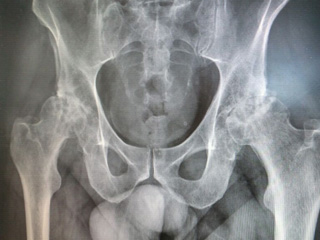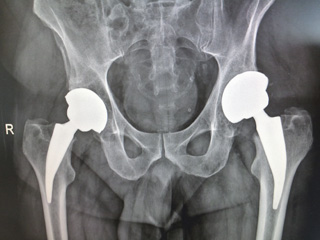Hip arthrosis is a very common disease in our times. It results in cartilage progressive degeneration in hip joint. Initially, the doctor can control first symptons thanks to analgesics such as paracetamol or ibuprofen. Otherwise, he can advise patients to take therapies destined for cartilage protection like glucosamine.
In severe cases with a bad pain control or an important function loss, there is no choice but to replace hip joint for a metallic prosthesis.
Hip joint replacement with minimally invasive surgery is a development that offers several possible advantages over usual surgical procedures.
These techniques satisfy a large variety of high quality hip implants, new minimally invasive surgical techniques and new instrumentation.
During the last 25 years, minimally invasive surgery has shaken up lots of fields in Medicine. Its key element is the usage of techniques and specialized small instruments which allow the doctor to achieve a bigger surgery without a big incision. In this regard, the hip joint replacement with MIC is “minimally invasive” because it requires smaller incisions and it will possibly cause less trauma in soft tissues than traditional techniques.
Possible Advantages
Minimally invasive hip method replaces the joint for a prosthesis doing a small incision of 8-12 cm. The procedure does not affect so many muscles and tendons as the usual procedure. It will enable a more natural reconstruction after adapting the prosthesis in its place and the possibility to come back to normal activities and functions quickly.
A smaller incision and lesser muscle disorder indicate that patients with a minimally invasive hip replacement surgery will lose less blood during the surgery, and the surgeon will not have to cut into your muscles, ligaments, and tendons as much. Because of these factors, they will have a shorter intervention, a postoperative recovery less painful and consequently a shorter hospital stay.
These techniques do not concern results in the long term.











